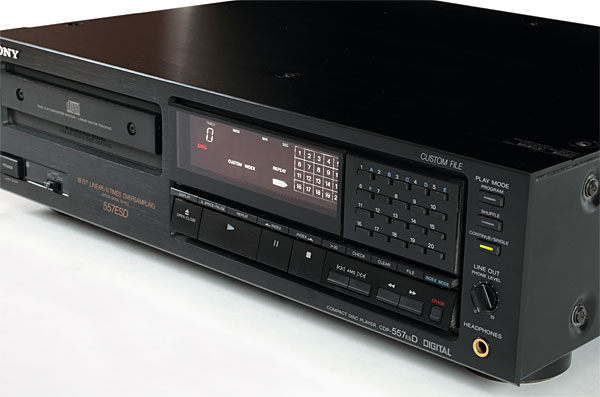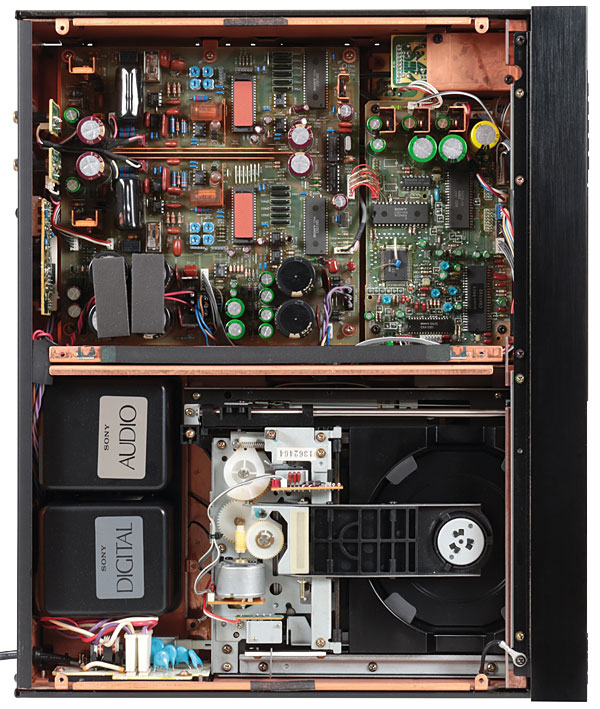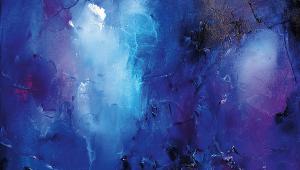Sony CDP-557ESD CD player Page 2
Rock Solid
Nevertheless, such is the state of the current classic CD player market that many 'multibit DAC' fans will cherish the CDP-557ESD for its general energy and brio, ignoring its conspicuous failings in other respects due to the fact that it has 'character'. For example, cue up Scritti Politti's 'Perfect Way' from their second album, Cupid & Psyche 85 [Virgin CDV 2350], and you're instantly struck by the player's rock-solid bass, glass-clear midband and shiny treble. At the same time, the music pushes along as if it's had one too many espresso coffees – it's one big caffeine rush of a performance.
 This is a real contrast to the smoother and more pedestrian sound of later Bitstream players, such as 1990's CDP-X77ES, yet the latter are also more couth and don't light up the midband like a search and rescue party. Even if Scritti Politti's singer Green Gartside's sugary vocals might sound a little too processed and edgy for some tastes, there was no denying their impact. Similarly, while the treble appeared chromium-plated – almost fizzy by modern standards – there are those that will appreciate its sheer bite.
This is a real contrast to the smoother and more pedestrian sound of later Bitstream players, such as 1990's CDP-X77ES, yet the latter are also more couth and don't light up the midband like a search and rescue party. Even if Scritti Politti's singer Green Gartside's sugary vocals might sound a little too processed and edgy for some tastes, there was no denying their impact. Similarly, while the treble appeared chromium-plated – almost fizzy by modern standards – there are those that will appreciate its sheer bite.
What's more, the Sony CDP-557ESD boasts a seemingly 'hewn from granite' soundstage. Spin up a classical recording such as Beethoven's 'Pastoral' Symphony [Karajan, Berlin Philharmonic, Deutsche Grammophon 2531106], and it's almost as if the orchestra's seating arrangements have been cast in concrete right in front of you. All the different instrument groups are locked in space with great authority while their images extend towards the listener to give a gripping, seat-of-the-pants listen. True, stage depth isn't particularly remarkable, but this is more than offset by the sheer width of the recorded acoustic the player conjures up.
For example, Kate Bush's 'Snowflake' [from her album 50 Words For Snow [Fish People TOCP-71202] enjoyed a really expansive sound, with the piano engulfing both left and right loudspeakers with ease. The result was highly immersive, while the singer's vocal was locked into the middle of the room with rifle-bolt precision.
Super-Grippy
Dynamically this player impresses too; indeed it's almost as if the Sony CDP-557ESD is looking for a reason to punch the music out to you. It likes big, rousing rock like Rush's 'Red Barchetta' [Moving Pictures; Mercury B0015272-00], where it emphasised the smack of the snare and bass drum work, along with the energy with which the drummer belted the hi-hats.
It really got into thumping out the bass guitar too, revealing how expressive an instrument it can be. The low-end was super-grippy and sinewy, yet had real kick. This made for a highly entertaining and dramatic sound, but one that almost seemed over-the-top at times.

And that's where this player comes up short. Yes, its sound is hugely impressive, but it draws attention to itself constantly, making it difficult for the listener to relax fully into the music. The first time you listen to the CDP-557ESD, you're inclined to wonder if CD has actually improved at all – yet keep listening for a few minutes and you're in no doubt that it has.
Nevertheless, this certainly isn't a player to dismiss out of hand. Quite the contrary, for it might well be a boon for those with more mellow-sounding systems looking for a source to inject some pizazz. It all comes down to sympathetic system-matching. Get it right and you'll be rewarded with sounds that sparkle, irrespective of music genre.
Buying Secondhand
The key issue when buying a CDP-557ESD [says Tim Jarman] is the condition of the optical unit. Unlike competing models from Marantz, Philips and Technics, this Sony player does not use a type also found in a multitude of cheaper machines. Furthermore, pattern replacements are not currently being produced. It is therefore important to be sure that the laser in any prospective purchase is in good condition.

Slow reading of the disc's TOC and mis-tracking, especially when playing the later tracks on a disc, are two signs that all is not well in this area, though this does not mean that in every case reluctance to play correctly is down to the optics. Just as in lesser Sony machines, the motors and gears that operate the drawer and clamping mechanism can seize, preventing the disc from loading properly. By contrast, the BSL (Brushless and SlotLess) spindle motor and linear sled-drive used are well engineered and don't usually cause any problems. A dimming display, where some of the less frequently used segments are noticeably brighter than the others, is a sure sign of a well used (and possibly tired) example, which is probably best avoided.
From an electronic point of view there is less to worry about, with poor soldering being the most frequent cause of circuit failure. The green Nichicon electrolytic capacitors used in some examples can corrode, as evidenced by white deposits around their sleeves and lead-outs. They may still work normally, despite being in this condition, but the corrosive liquid that leaks out can damage the PCB traces, which can eventually lead to all manner of strange issues. The problem is not as bad as it was with the SMT components found in later Sony equipment, however.
Hi-Fi News Verdict
Sony's 1987 CDP-557ESD is the CD player equivalent of a shiny red Porsche Turbo whale-tail, from the days when Gordon Gecko called the shots on Wall Street and greed was good. A true tour de force in its time, it now seems rather contrived both in its styling and its sound. Yet it consciously reminds us of just what the Sony Corporation was capable of when it felt the need. We will not see its like again.






















































